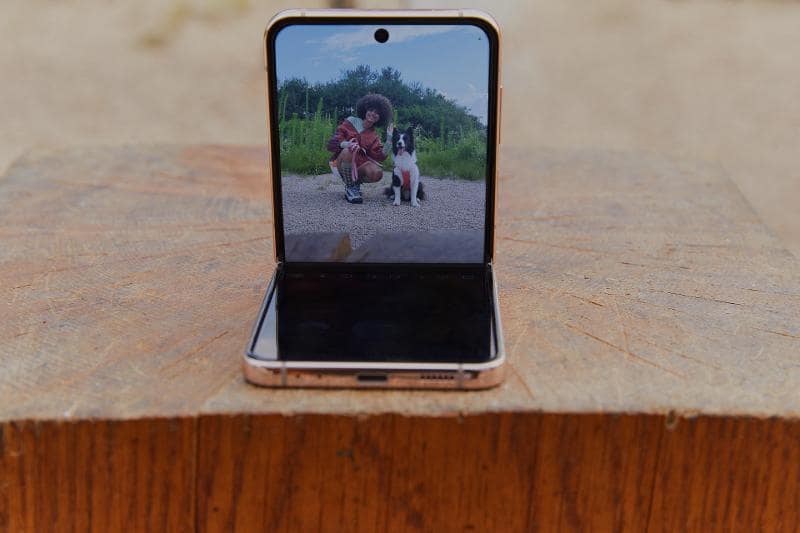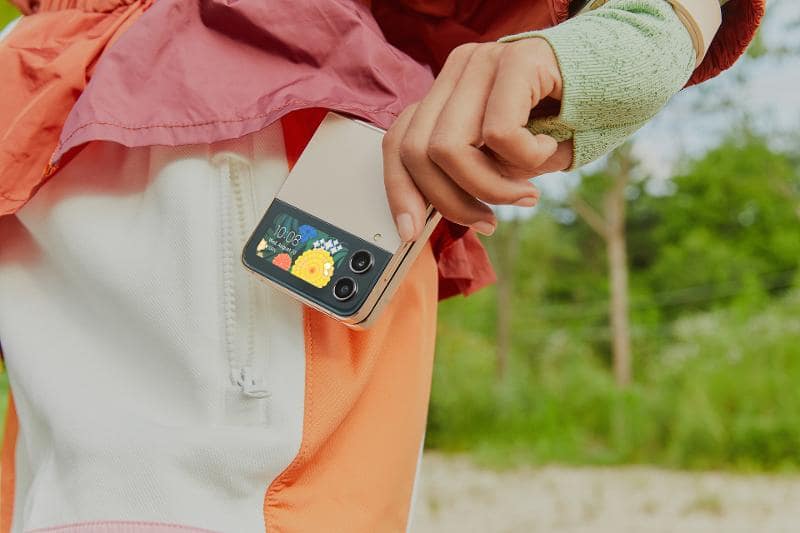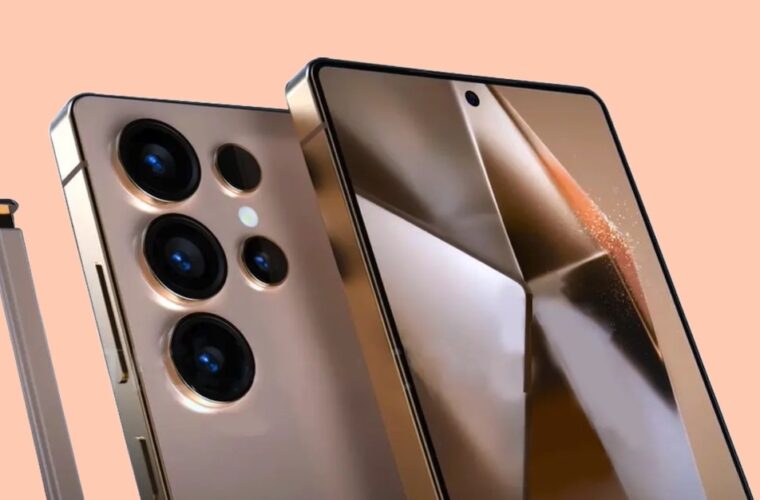Small is beautiful; if foldable, even better. Much of the value of the Z Flip 4, the pocket-sized smartphone with a flexible screen that Samsung has unveiled in recent weeks, lies in this summary. Now in its fourth generation, there is no longer the wow effect previously achieved when the foldable made its debut, opening up a new product category among smartphones. Now the Korean manufacturer aims to improve everyday use, add new features, and improve photography and autonomy, to show that choosing a Galaxy Z Flip 4 no longer means prioritising aesthetics to the detriment of performance or autonomy.
Design & Display
Picking it up in your hand, it is almost hard to find the differences with the previous model because the design is almost identical, even though the latest arrival weighs less (187 grams) and has a thickness that goes from 6.9 to 15.9 millimetres when open to closed, and integrates slightly more protruding cameras.
The mix of aluminium and glass offers a solid feel, thanks partly to the Gorilla Glass Victus+ and a new, stronger hinge that makes it more challenging to open the phone with one hand. Samsung has done a good job of reducing the controversial crease, which shapes maniacs will still find objectionable. However, the effect is much less visible and annoying than on Flip 3. Note the IPX8 certification for water resistance, which is far from obvious for a foldable model.
The display remains 6.7 inches with a flexible AMOLED panel with a refresh rate of up to 120 Hz and 2640 x 1080 pixel resolution, 426 PPI density and 1200 nits peak brightness. It displays well even in bright sunlight; however, the brightness is in absolute terms lower than the flat screens of Samsung’s flagships, although this does not detract from the effectiveness of the Galaxy Z Flip 4.
The unlocking systems are surprising, as the fingerprint reader integrated into the power button on the side is quick and very accurate. At the same time, facial recognition is slower and often struggles to detect the face. The external display allows you to view notifications and keep an eye on the calendar and weather, but it needs the hoped-for step forward because the size remains the same as the previous model: 1.9 inches, too small to have the desired plus.







More battery life with the new processor
The new Qualcomm Snapdragon 8+ Gen 1 processor, together with the Adreno 730 GPU, brought a number of improvements. The most immediate reflection of more careful energy management rewards autonomy, not least because the Koreans have chosen a 3700 mAh battery (compared to the 3300 mAh battery of the Z Flip 3). Thanks to lower power consumption, the Galaxy Z Flip 4 is always smooth and responds well to the launch of any application. It should be borne in mind, however, that this is not the smartphone for multitasking and pushing productivity and gaming, the preferred fields of action of Samsung’s other foldable, the Z Fold 4.
Even when used intensively from the morning, the phone holds out and arrives in the evening with a small margin of autonomy. As for charging times, the 25W fast system has improved in the past, not least because this time, there is support for wireless charging (15W) and reverse charging (5). Needless to compare with the faster solutions of other smartphones, remembering that for the past two years, Samsung has only included the USB-C cable in the package, forcing those without it to buy a charger.
A funny camera
The camera compartment remains identical in numbers, with the main and ultra-wide cameras 12 megapixels and a 10-megapixel selfie camera. However, the internal structure has changed, as the primary camera sensor relies on larger pixels than in the past, thus capturing more light, which translates into sharper images (although the differences with the Flip 3 are not huge).
Having said that, on the next model, it would be nice to add a zoom lens; the great thing about taking pictures with the Z Flip 4 is that you can experiment more than usual because the body acts as a tripod on any surface and the software adapts automatically, making it easier to take the shot. Likewise, the external display acts as a viewfinder for the main camera and allows you to have fun, even with selfies, for which it is better to take advantage of the rear cameras.
Good results are also obtained with videos, facilitated by the stabilisation and the maximum 4K resolution at 60 fps, although the different rendering that rewards overnight daytime clips is evident. The audio is good, although, in music reproduction, the bass struggles slightly in contrast to other frequencies.
An important detail concerns monthly updates and security patches, which Samsung has guaranteed in the first case until 2026 and for the next five years in the second case.





Z Flip 4, buy or not?
Samsung offers three versions of the smartphone with 128 GB, 256 GB or 512 GB storage, always with 8 GB Ram, in the colours Bora Purple, Graphite, Pink Gold and Blue. Prices vary slightly in the different European countries. Still, in all cases, the model with the minimum storage is always on sale for around EUR 1,100, and the minimal cost difference between the two makes the 256 GB version preferable.
As for judgement, it depends very much on personal taste and habits because, more than with traditional smartphones, the form-factor is a determining factor in the choice. If you like the idea of a compact, pocket-sized phone, then the Z Flip 4 is one of the best options on the market. Even better if the aim is to impress friends or stand out in a landscape full of similar models. On the other hand, if the idea of a foldable screen doesn’t excite you, and especially if you are interested in a smartphone dedicated to productivity, you should look elsewhere.



